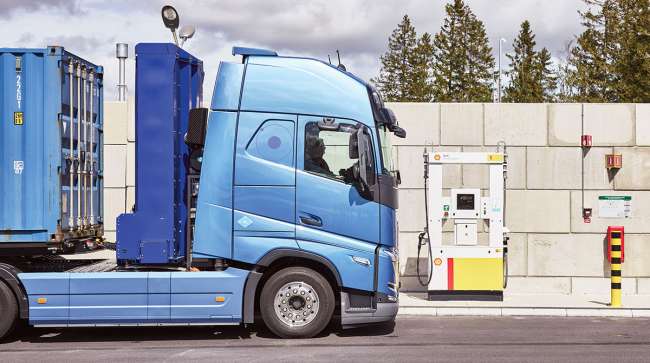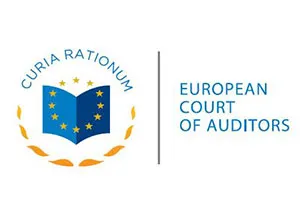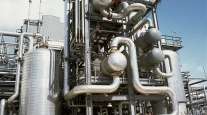Staff Reporter
Auditing Report Calls EU’s Hydrogen Targets Unrealistic

[Stay on top of transportation news: Get TTNews in your inbox.]
The European Union is likely to miss its hydrogen targets due to unrealistic goals “driven by political will” and needs a strategic plan to avoid harming key competitive industries, according to a report from the governing body’s financial watchdog.
Damijan Fišer, senior communication officer at the European Court of Auditors in Luxembourg, told Transport Topics the report will be submitted to the Council of the European Union, which is composed of government ministers, in the fall and later to the European Parliament.
He was closely involved in announcing the 106-page audit report called “The EU’s Industrial Policy on Renewable Hydrogen: Legal Framework Has Been Mostly Adopted — Time for a Reality Check.”
The audit was conducted four years after EU’s passage of its hydrogen strategy to learn what has happened since then and potential course corrections. The analysis was based on EU documents on hydrogen (such as policies and funding plans), data mainly from the International Energy Agency and the European Commission, and interviews with stakeholders. The audit also delved into hydrogen activities in the member states of Germany, Netherlands, Poland and Spain.

Fišer
Stef Blok, the European Court of Auditors member from Netherlands, spearheaded the audit.
“The EU’s industrial policy on renewable hydrogen needs a reality check. The EU should decide on the strategic way forward toward decarbonization without impairing the competitive situation of key EU industries or creating new strategic dependencies,” Blok said. The report predicted the EU is unlikely to meet its 2030 hydrogen targets to lower net carbon emissions by 55% compared with 1990 levels — key to achieving net-zero greenhouse gas emissions by 2050.
Blok said the European Commission created “overly ambitious” renewable hydrogen targets to produce and import 10 million tonnes each by 2030. He is one of 27 chief auditors within the European Court of Auditors.

Blok
“These targets were not based on a robust analysis, but were driven by political will. Moreover, achieving them has had a bumpy start. Firstly, member states’ differing ambitions were not always aligned with the targets,” he said. “Secondly, in coordinating with the member states and industry, the commission failed to ensure that all parties were pulling in the same direction.”
Auditors found partial government success in creating conditions for an emerging hydrogen market and value chain. They also determined the legal framework is nearly complete for renewable hydrogen.
Yet, many obstacles remain such as a need to lower time needed to obtain permits for renewable hydrogen and renewable energy projects. Questions also remain about whether member states will be able to develop hydrogen to meet the EU’s demand targets.

Another obstacle is funding. “Investment needs are huge,” the report noted, the EU lacks a complete overview of financial requirements and a comprehensive list of available public funds. The EU has earmarked 18.8 billion euros from 2021 to 2027 to fund hydrogen-related projects.
“Industry is faced by a set of different EU funding programs with different rules, making it difficult to determine the best-suited program for a given project. There is still no guarantee that the EU’s hydrogen production potential can be fully harnessed,” the report stated.
Auditors advise the European Commission to update its hydrogen strategy by carefully evaluating how best to:
- Calibrate market incentives for renewable hydrogen production and use.
- Prioritize scarce EU funding while focusing on economic value chains.
- Decide which industries the EU wants to keep and at what price when balancing products that should be made in the EU compared with nonmember imports.
Did You Know?
Nearly three gallons of ultrapure water are needed to make 2.2 pounds of renewable hydrogen through water electrolysis.
Other areas of concern involved the ability of electrolyzers to produce sufficient energy, energy wasted through the renewable hydrogen production and high amounts of water need to make that hydrogen.
Uncertainties exist in how much energy actually comes from electrolyzers due to concerns about their efficiency and output. Electrolyzers powered by stand-alone solar farms have lower energy yields than those using electricity from a power grid.
“Producing renewable hydrogen using electrolysis is very energy-intensive because a certain amount of the electricity used is lost in the process. Therefore, it is often more cost-effective to use that electricity directly rather than converting it into hydrogen. Reconverting the hydrogen to electricity leads to further energy losses,” the report stated.
TT's Seth Clevenger and Mike Senatore dive into the details behind the 2024 Top 100 Private Carriers list. Tune in above or by going to RoadSigns.ttnews.com.
Another problem was member states having different ideas about their hydrogen strategies and lacking uniformity with the EU.
“While certain member states have the potential to produce renewable hydrogen for export (within or outside the EU), we found that only very few include specific indications relating to the export of renewable hydrogen in their strategies aligned with the EU targets,” the auditors noted.
Fišer underscored that publishing the hydrogen audit report “is not the end of the process.”
“We afterwards present our reports to our stakeholders, notably the Council of the EU and the European Parliament, as the impact of our work comes largely from the use they make of it,” he said. “These two key political bodies of the EU can also produce resolutions and their own reports based on ours.”
Want more news? Listen to today's daily briefing below or go here for more info:





